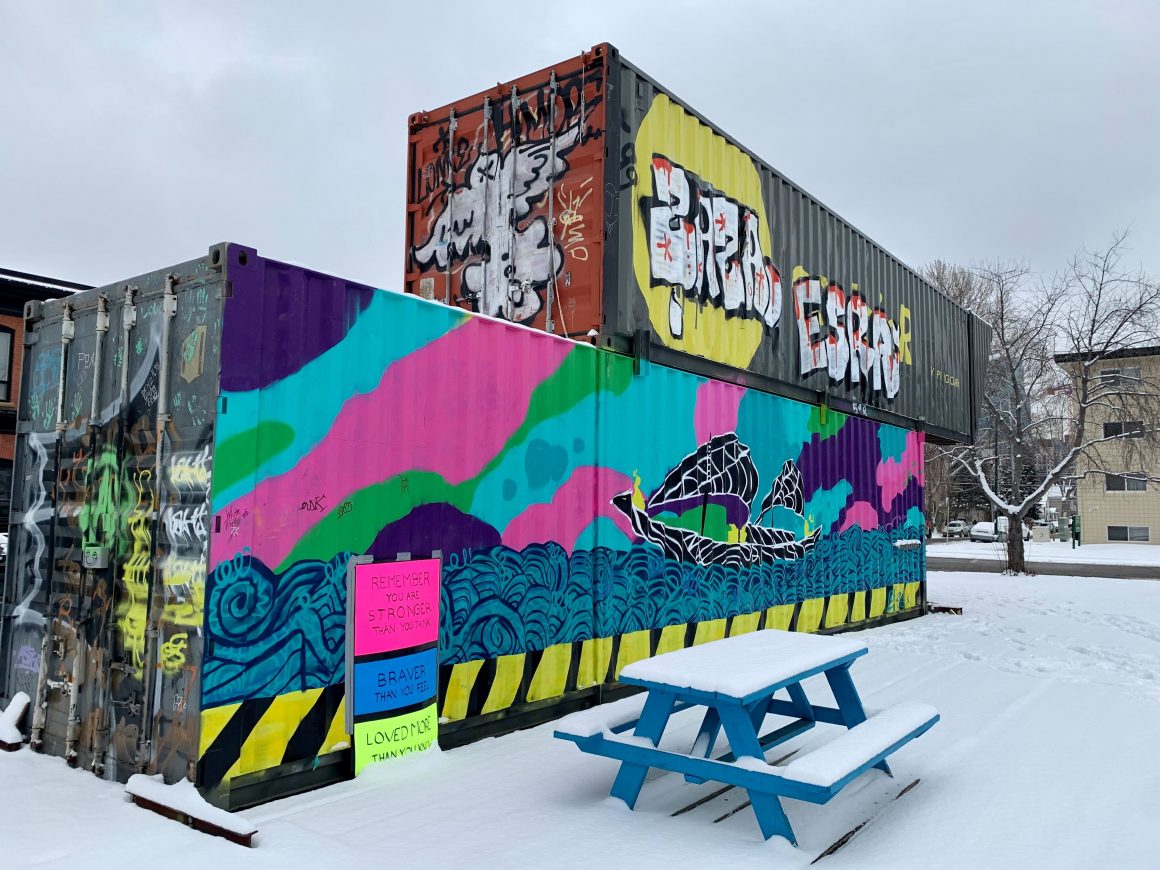
Black Lives Matter is a social justice movement, not a model
By Sheroog Kubur, February 24 2023—
It was in the year 2020 when social justice became mainstream. At the height of the Black Lives Matter resurgence in June of 2020, governments and organizations were scrambling to show their solidarity with the Black community by donating funds, making public statements denouncing police brutality and commissioning Black artists to create murals dedicated to the movement. The one in Calgary that has caused the biggest stir was located in the containR Art Park, an outdoor collection of shipping containers used as a venue for small-scale festivals and graffiti art. The Black Lives Matter mural was made in June and vandalized twice in the next five months. Since then, the mural has been vandalized to adhere to the various social justice movements that followed, including replacing Black with Brown and Asian.
In the months following the initial social justice storm in 2020, different movements began to take shape following a similar pattern. In December 2020, Farmer Lives Matter was born in solidarity with protesting farmers rallying for their rights against unfair legislation. Stop AAPI (Asian American and Pacific Islander) Hate started in August 2020 to chronicle the increase of anti-Asian American violence in the U.S. since the start of the pandemic. It gained notoriety in April 2021 when it was reported that attacks on Asian Americans grew rapidly since the start of the pandemic.
Suddenly, social media was bombarded with infographics and graphic videos daily about how to support different ethnic and racial minorities around the world. All were done in good faith, but most were with the caveat of “Why isn’t this getting as much attention as BLM?” or other statements of a similar sentiment.
As a Black person, seeing all these movements was bittersweet. I was happy that social justice was finally being seen as a viable course of action instead of a radical overreaction, but I was frustrated to see that the “(Blank) Lives Matter” name was being used by communities that have been and continue to be anti-Black. It felt like the retelling of a familiar story — Blackness, and by extension racial justice, is only cool if it’s detached from the Black body.
The vandalism of the mural speaks to a bigger issue than whether or not racism exists in Calgary. By replacing the word Black with other racialized groups, it highlights one very important thing — there’s only enough space for one social movement at a time. While the art was made in solidarity with the Black community, it became a forum for all racial minorities to share their struggles, whether or not they were invited to contribute to the mural.
Despite all these issues tackling very valid and pertinent issues, it seems each social justice movement borrows heavily from the momentum of Black Lives Matter, ranging from replacing the name with whatever social justice movement is at the forefront at the time to borrowing symbology. It was to the extent of mischaracterizing existing movements, like the temporary Asian Lives Matter movement instead of the existing Stop AAPI Hate.
By having all these issues become one and the same, there is a risk of diminishing each individual movement. Black Lives Matter is no longer about the systematic oppression of Black people, but the systematic oppression of all racial minorities. While asking for legitimacy isn’t the intention of the movement, it becomes impossible to legitimize a movement that is meant to encompass every concern of every community. There’s little room for the nuances of each struggle, overall reducing the fight for racial equality to be nothing more than a blanket statement of “stop being racist.”
Intersectionality can exist without diminishing other racial minorities. The continuous vandalism of the BLM mural was a misguided attempt at shining a light on the struggles of other racial minorities, but without solidarity within the Black, Indigenous and person of colour community, it feels dismissive and reductive. While solidarity isn’t going to solve all problems, neither will shouting over each other.
This article is a part of our Voices section and does not necessarily reflect the views of the Gauntlet editorial board.
